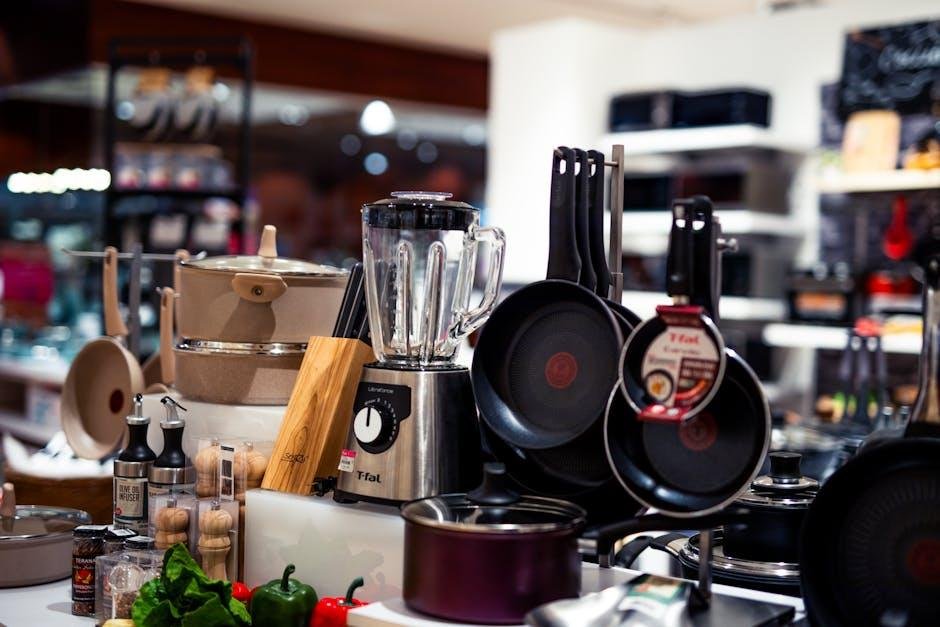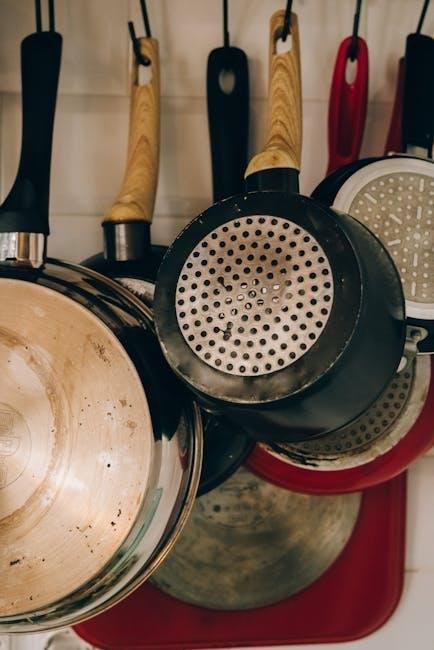In the world of culinary endeavors, the right tools can make all the difference. Among them, non-stick pans hold a special place, promising the ease of cooking and cleaning that every home chef craves. though,as we dive deeper into the kitchenware landscape,concerns about safety and longevity arise—notably regarding toxins that flake into our food. With a growing consciousness towards health and sustainability, it’s more important than ever to choose non-stick pans that not only perform well but also protect what matters most: our health. In this article, we’ll explore the best non-stick pans available on the market, highlighting options that combine innovative technology with peace of mind, ensuring every meal is flavorful, safe, and worry-free. Join us as we sift through the plethora of choices to find the cookware that meets both culinary demands and safety standards.
The Science Behind Non-Toxic Non-Stick Coatings
In recent years, the quest for healthier cooking options has shifted focus towards non-toxic non-stick coatings that prioritize safety without sacrificing performance. Traditional non-stick coatings, often composed of polytetrafluoroethylene (PTFE) and perfluorooctanoic acid (PFOA), have raised concerns over potential health risks stemming from their decomposition at high temperatures. in contrast, modern alternatives leverage advanced materials such as ceramic, silicone, and multilayer coatings that provide excellent release properties while enhancing durability. these innovations not only resist scratching and flaking but also withstand higher cooking temperatures, reducing the likelihood of harmful chemical leaching into your food.
When assessing the safety and efficacy of non-stick cookware, its vital to consider the benefits of certain materials that are engineered for health-conscious consumers. Here are several key features of non-toxic non-stick coatings that make them an attractive option:
- ceramic coatings: Derived from natural materials, they are free from PTFE and PFOA, leading to cleaner cooking.
- Silicone coatings: Non-stick, flexible, and safe for high temperatures, silicone can also resist stains and odors.
- Hard-anodized aluminum: this material features a non-reactive surface that is impervious to chemicals and enhances heat distribution.
By choosing cookware with these advanced non-stick technologies, you can cook with peace of mind knowing that your meals are free from harmful substances. Invest in the wellness of yourself and your family without sacrificing culinary pleasure.

Exploring the Best Materials for Safe Cooking
When it comes to selecting cookware, prioritizing safety and health shoudl always be at the forefront. Non-stick pans have long been favored in kitchens for their effortless food release and easy cleanup. However, many traditional options may contain harmful chemicals that can leach into your food over time.To maintain a healthy cooking environment, consider pans made from ceramic, cast iron, or stainless steel. Each option not only avoids the pitfalls of toxic coatings but also offers durability and longevity that can withstand the rigors of daily cooking.
Here are key materials worth exploring for safe cookware choices:
- Ceramic Non-Stick: Free from PTFE and PFOA, offering a smooth surface that cooks evenly.
- Cast Iron: Naturally non-stick when seasoned, provides excellent heat retention and versatility.
- Stainless Steel: No coating and incredibly durable, ideal for browning and searing.
| material | Safety | Durability | Maintainance |
|---|---|---|---|
| Ceramic | Non-Toxic | Medium | Easy to clean |
| Cast Iron | Non-Toxic | Very High | Requires seasoning |
| Stainless Steel | Non-Toxic | Very High | Dishwasher safe |
By making informed choices about the materials in your kitchen, you can enjoy cooking with confidence while safeguarding your health. Transitioning to safer alternatives will not only enhance your cooking experience but also contribute positively to your long-term wellbeing.

Top Picks for Durability and Performance
When searching for non-stick pans that endure the test of time without compromising safety, it is vital to focus on materials engineered for maximum resilience. Ceramic-coated pans stand out for their ability to withstand high temperatures while offering a naturally non-stick surface,devoid of harmful chemicals. Brands such as GreenPan and Cuisinart utilize advanced ceramic technology, providing excellent heat distribution and durability, ensuring that the coating remains intact even with regular use. Additionally, anodized aluminum pans combine lightweight construction with extraordinary resistance to scratching and denting, making them perfect for everyday cooking.
For those seeking a balance of performance and safety, consider cookware lines that feature hard-anodized surfaces. Notable options include the T-fal Ultimate and Calphalon Classic,both recognized for their ability to resist warping and scratching. their robust construction promotes efficient heat retention, enhancing the cooking experience.Below is a comparison of key features to consider when selecting pans focused on durability and performance:
| Brand | Material | Heat Resistance | Durability Rating |
|---|---|---|---|
| greenpan | Ceramic | Up to 600°F | ⭐⭐⭐⭐⭐ |
| T-fal Ultimate | Hard-anodized Aluminum | Up to 400°F | ⭐⭐⭐⭐ |
| Calphalon Classic | Hard-Anodized Aluminum | Up to 450°F | ⭐⭐⭐⭐⭐ |
| Cuisinart | Ceramic | Up to 500°F | ⭐⭐⭐⭐ |

Caring for Your Non-Stick Pans to Ensure Longevity
Maintaining the integrity of your non-stick pans is essential for both the quality of your cooking and your health. To preserve their non-stick properties and ensure they last for years, consider the following care tips:
- Avoid metal utensils: Always opt for silicone, wooden, or plastic utensils.Metal can scratch the surface, compromising its non-stick capabilities.
- Gentle cleaning: Clean your pans with a soft sponge and mild dish soap. Harsh sponges can erode the coating over time.
- Temperature control: Use low to medium heat settings. High temperatures can warp the pan and damage its coating.
- No cooking sprays: Avoid aerosol cooking sprays as they can leave a residue that is difficult to remove and may degrade the pan.
To further understand the care and maintenance of your non-stick cookware, it’s beneficial to explore how different cooking practices can affect their lifespan. Here’s a simple comparison of damage risk based on common practices:
| Practice | Risk level |
|---|---|
| Using metal utensils | High |
| Cleaning with steel wool | High |
| Cooking on low to medium heat | Low |
| Oiling the surface before cooking | Low |
By following these guidelines,you can enjoy the performance of your non-stick pans while ensuring they remain safe and functional for years.
To Conclude
while the world of cookware can be a minefield of options and questionable materials, the quest for a reliable non-stick pan doesn’t have to be daunting. Armed with the insights provided in this article, you can confidently select a pan that not only sears and sautés to perfection but also aligns with your health-conscious values. From innovative ceramic coatings to durable stainless steel alternatives, the best non-stick pans offer both functionality and peace of mind. As you embark on your culinary adventures, remember that the right tools will not only enhance your cooking experience but will also help you savor every delightful bite—without the worry of toxins lurking in your meal. Happy cooking!

